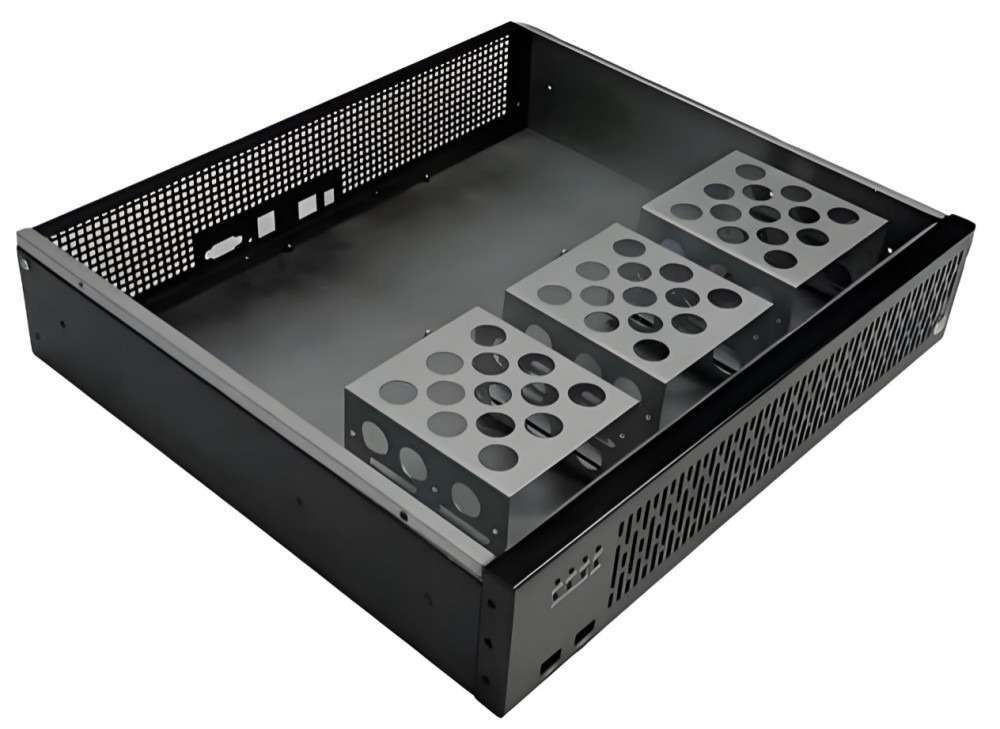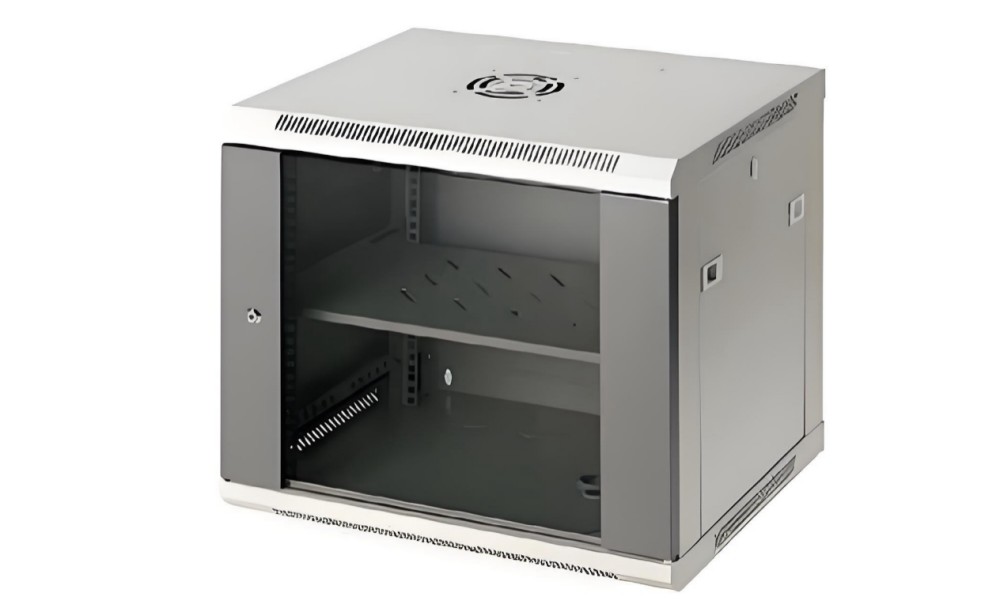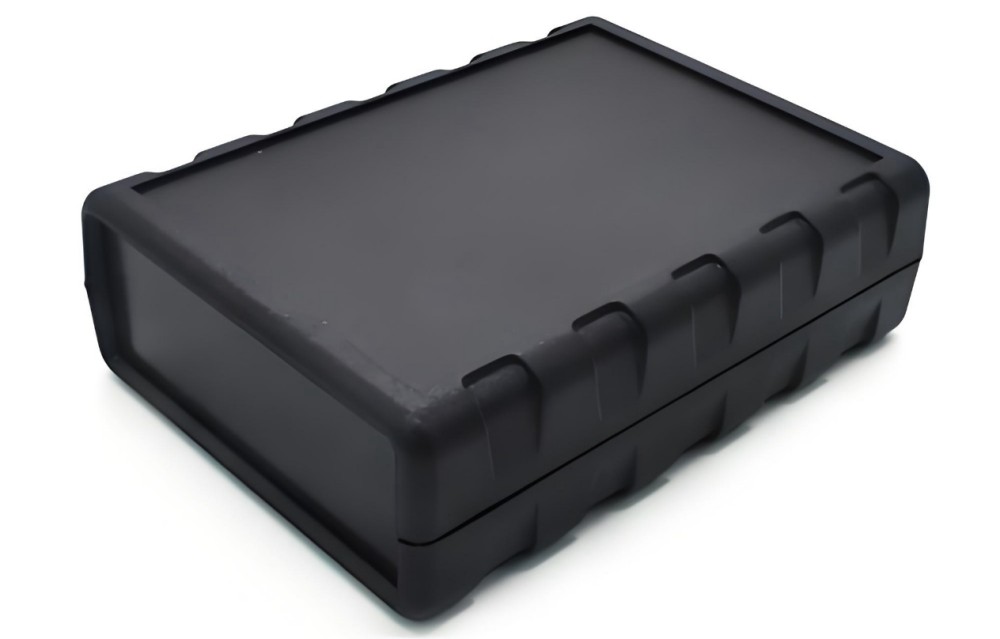
Industrial enclosures are essential in protecting sensitive electronic and electrical equipment from environmental factors such as moisture, dust, chemicals, and physical impacts. The material selected for the enclosure plays a critical role in its durability, functionality, and overall effectiveness.
The decision on which material to use—whether aluminum, stainless steel, or plastic—depends on various factors, including environmental conditions, mechanical protection, cost, and weight considerations.
In this blog, we’ll explore the characteristics of aluminum, plastic, and stainless steel enclosures, discussing when each material is most appropriate for use in industrial settings.
Understanding Common Enclosure Materials
Aluminum Enclosures

Aluminum is a lightweight, corrosion-resistant material that offers a great balance of strength, durability, and cost-effectiveness. It is frequently chosen for its excellent thermal conductivity, which helps dissipate heat generated by electrical components.
Aluminum enclosures are widely used across industries such as aerospace, telecommunications, and industrial automation. They provide effective shielding against electromagnetic interference (EMI), which is essential for sensitive electronics.
Stainless Steel Enclosures

Stainless steel enclosures are known for their strength and resistance to corrosion, especially in harsh or high-demand environments. These enclosures can withstand exposure to extreme temperatures, chemicals, and physical stress, making them ideal for industrial and marine applications. Stainless steel is a heavier material than aluminum, but it provides superior protection in environments where durability and resistance to external forces are critical.
Plastic Enclosures

Plastic enclosures are lightweight and cost-effective, often used in applications where environmental conditions are less harsh. They are non-conductive, reducing the risk of electrical hazards, and are frequently used in consumer electronics, small electronic devices, and telecommunications. However, plastic enclosures generally offer less protection from high temperatures, UV radiation, and chemical exposure when compared to metal enclosures.
Factors to Consider When Selecting Enclosure Materials
Environmental Conditions
The operating environment significantly influences material selection. For outdoor applications or environments with high humidity, corrosive chemicals, or extreme temperatures, materials like stainless steel or aluminum are preferable due to their enhanced resistance to such conditions. Plastic enclosures may degrade under UV exposure or in chemically aggressive environments.
Mechanical Protection
Enclosures must provide adequate protection against physical impacts. Stainless steel offers superior impact resistance and is suitable for heavy-duty applications. Aluminum provides a balance between strength and weight, while plastic enclosures are more prone to cracking under stress.
Thermal Management
Effective heat dissipation is crucial to prevent overheating of electronic components. Aluminum enclosures excel in thermal conductivity, facilitating heat dissipation. Stainless steel has lower thermal conductivity but can be used with additional cooling mechanisms. Plastic enclosures may require design modifications to enhance heat dissipation.
Electromagnetic Interference (EMI) Shielding
In applications sensitive to electromagnetic interference, materials like aluminum and stainless steel provide effective shielding. Plastic enclosures may require additional EMI shielding measures to protect the enclosed electronics.
Cost and Weight Considerations
Budget constraints and weight limitations play a role in material selection. Plastic enclosures are cost-effective and lightweight, suitable for applications with less demanding environmental requirements. Aluminum offers a balance between cost and performance, while stainless steel, though more expensive, provides superior protection in harsh conditions.
When to Use Aluminum Enclosures?
Aluminum enclosures are a versatile and popular choice for many industrial applications due to their combination of strength, lightweight design, and corrosion resistance.
Here are a few scenarios where aluminum enclosures are most beneficial:
Applications Requiring Lightweight Protection: Aluminum is ideal when weight reduction is critical, such as in aerospace, portable equipment, and automotive applications. The lightweight nature of aluminum makes it easier to handle, transport, and install, which is particularly important when the enclosure needs to be moved frequently or mounted on mobile equipment.
Heat Dissipation Needs: Aluminum’s excellent thermal conductivity makes it the ideal material for enclosures that house components generating significant heat. This includes power supplies, lighting, and electronic devices in telecommunications. The material allows heat to dissipate quickly, preventing overheating and extending the lifespan of the enclosed equipment.
Corrosion Resistance in Outdoor or Harsh
Environments: Aluminum is naturally resistant to corrosion, making it the go-to material for outdoor enclosures and applications in humid or corrosive environments. Whether it’s in the marine industry, industrial automation, or telecommunications, aluminum provides the durability needed to withstand weathering, rusting, and other forms of environmental degradation.
EMI Shielding: If your equipment requires protection from electromagnetic interference, aluminum enclosures are a strong choice. They provide excellent EMI shielding, ensuring that the electronics inside remain free from interference that could degrade performance.
When to Use Plastic Enclosures?
Plastic enclosures are a cost-effective and lightweight alternative to metal enclosures. They are frequently used in applications where the environmental conditions are not as demanding. Below are some situations where plastic enclosures are the best option:
Cost-Effective Solutions: When budget is a primary concern, plastic enclosures are typically much cheaper than metal alternatives. For industries where cost savings are important—such as consumer electronics or mass-produced small devices—plastic enclosures provide an affordable solution without compromising too much on performance.
Indoor Applications: Plastic enclosures are well-suited for indoor environments where exposure to UV light, extreme temperatures, and corrosive chemicals is minimal. Applications like office equipment, home appliances, and non-industrial electronics can benefit from the lightweight and inexpensive nature of plastic enclosures.
Electrical Insulation: One of the main advantages of plastic is its non-conductive nature. For electronic devices where electrical insulation is critical, such as in low-voltage applications, plastic enclosures help to prevent electrical hazards. This makes them ideal for use in consumer electronics, telecommunications, and audio equipment.
Design Flexibility: Plastic enclosures can be moulded into a wide variety of shapes and sizes, allowing for complex designs that might be difficult or costly to achieve with metal enclosures. For custom-made devices or products that require specific geometric features, plastic enclosures offer design flexibility.
Lightweight Applications: If weight is a key consideration but the protection level needed is relatively low, plastic enclosures can provide an excellent solution. They are significantly lighter than metal enclosures, making them ideal for lightweight consumer devices, such as portable electronics and small gadgets.
Summary Comparison Table
| Material | Strength | Corrosion Resistance | Thermal Conductivity | EMI Shielding | Weight | Cost |
| Aluminum | Moderate | High | High | Good | Low | Moderate |
| Stainless Steel | High | Very High | Low | Excellent | High | High |
| Plastic | Low | Moderate to Low | Low | Poor | Very Low | Low |
Conclusion
Selecting the right material for industrial enclosures is a critical decision that impacts the performance, durability, and safety of electronic and electrical equipment. Aluminum enclosures are well-suited for applications requiring a lightweight, corrosion-resistant, and thermally conductive solution, while stainless steel enclosures provide superior protection in harsher environments. On the other hand, plastic enclosures offer an affordable, lightweight solution for less demanding applications.
Understanding the environmental conditions, mechanical requirements, and cost considerations of your project will help guide you in choosing the best material for your enclosure needs. By evaluating all these factors, you can ensure the longevity and functionality of your equipment in even the most challenging environments.




